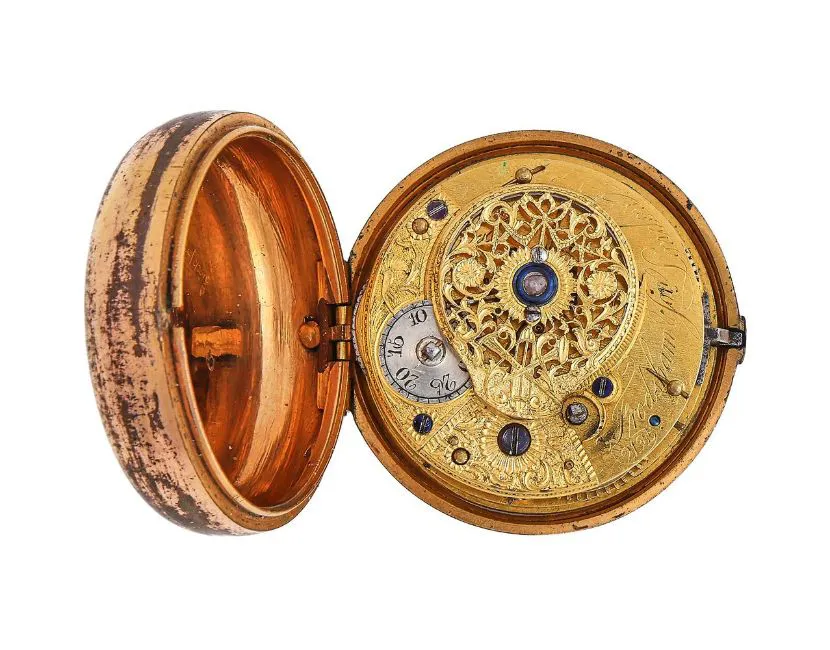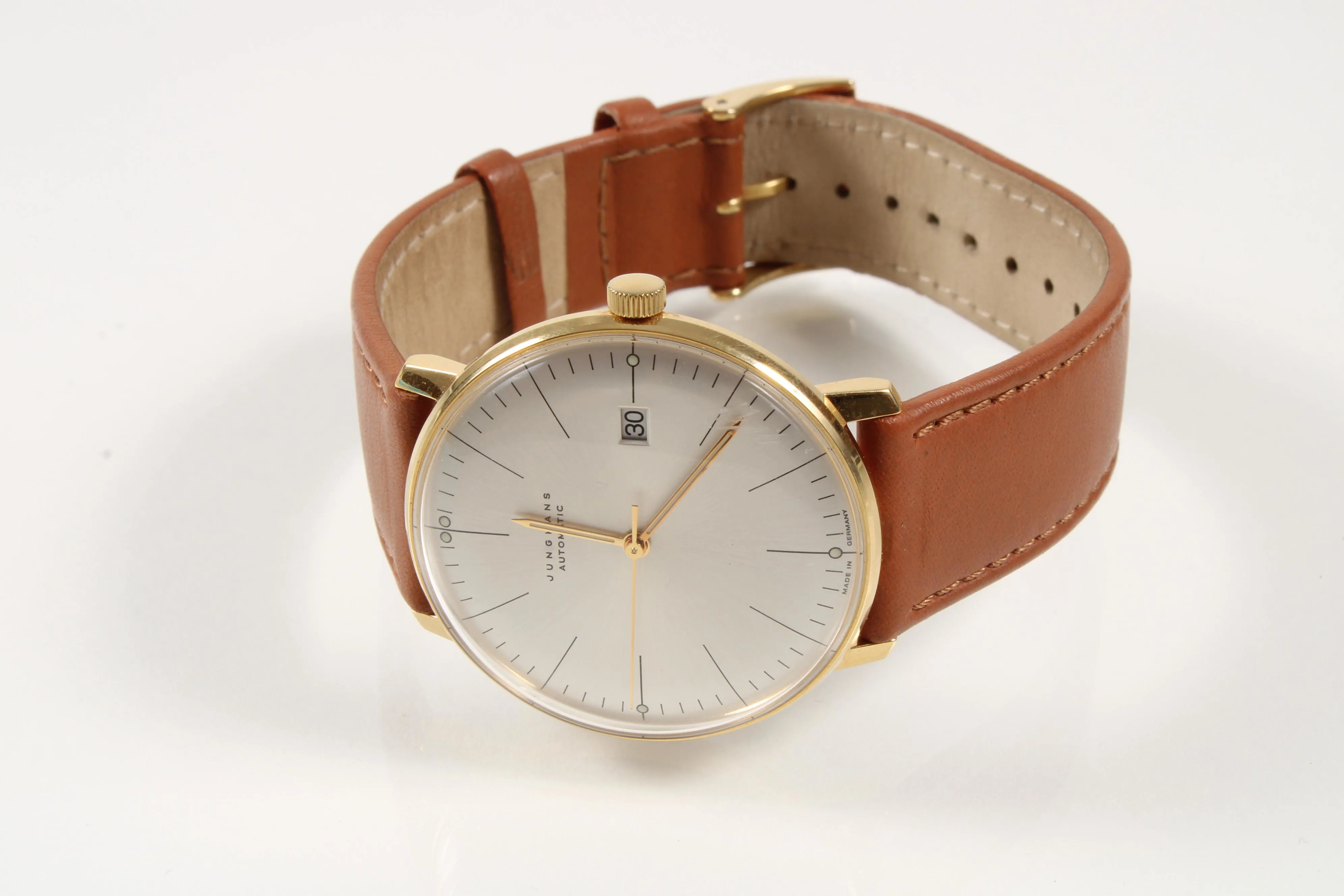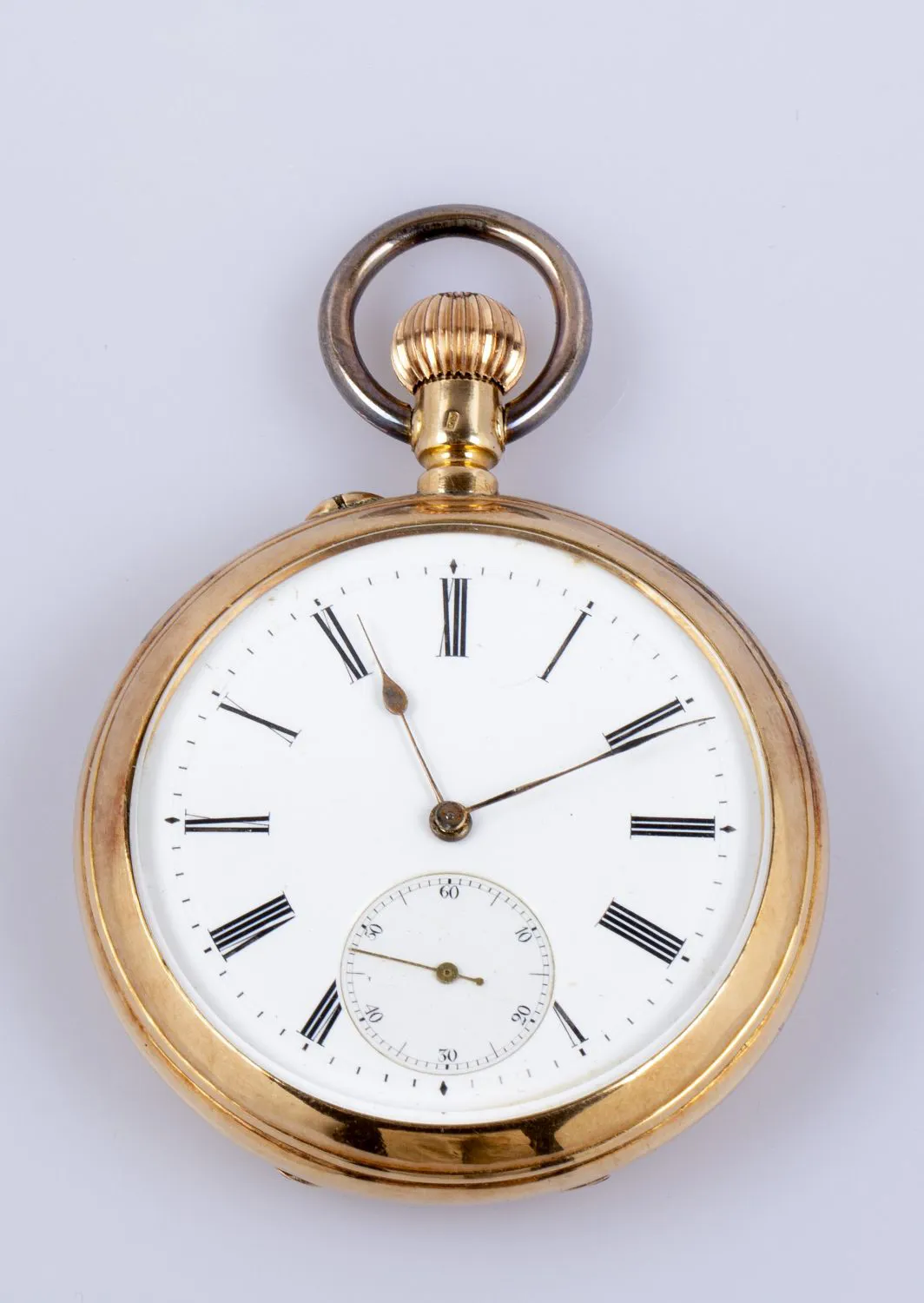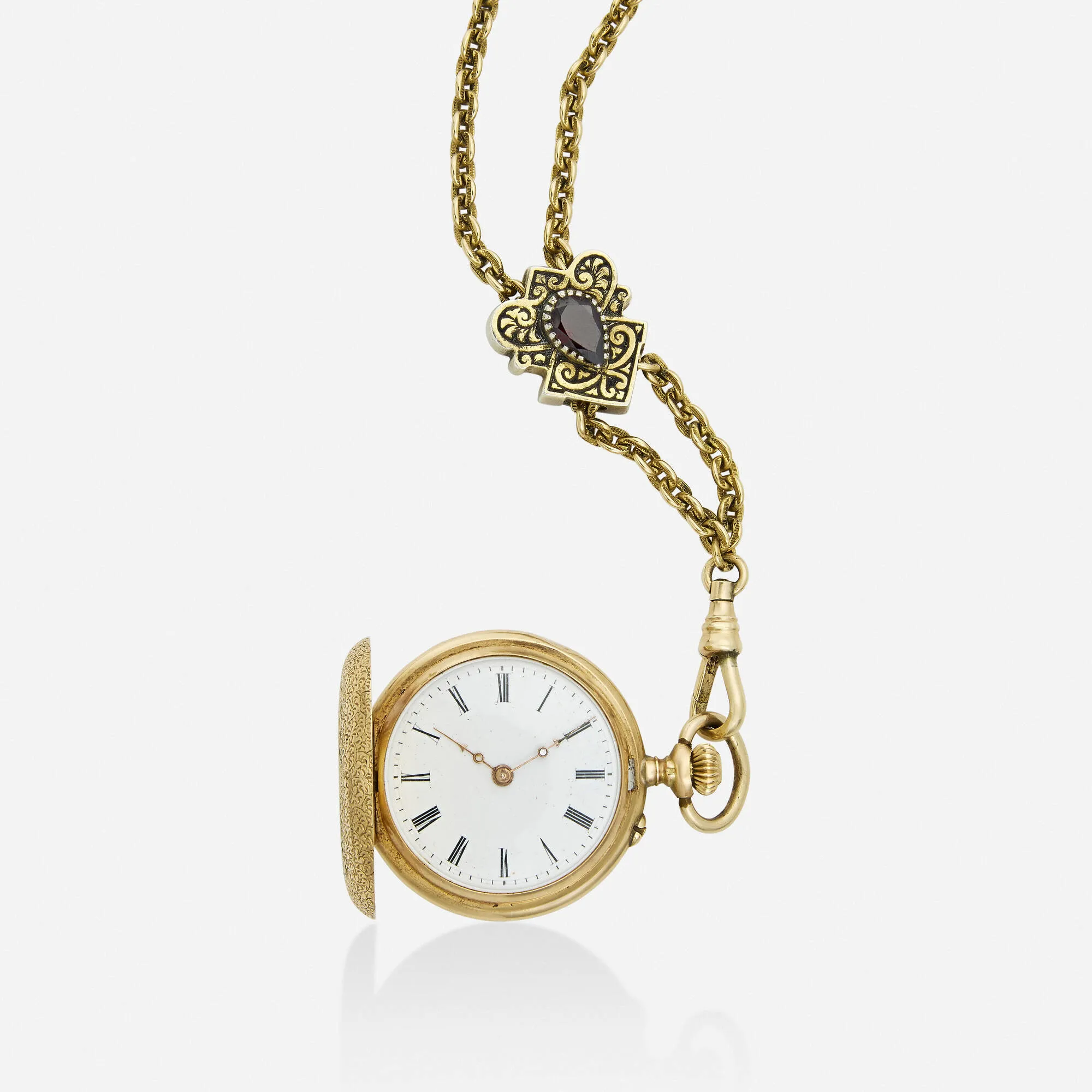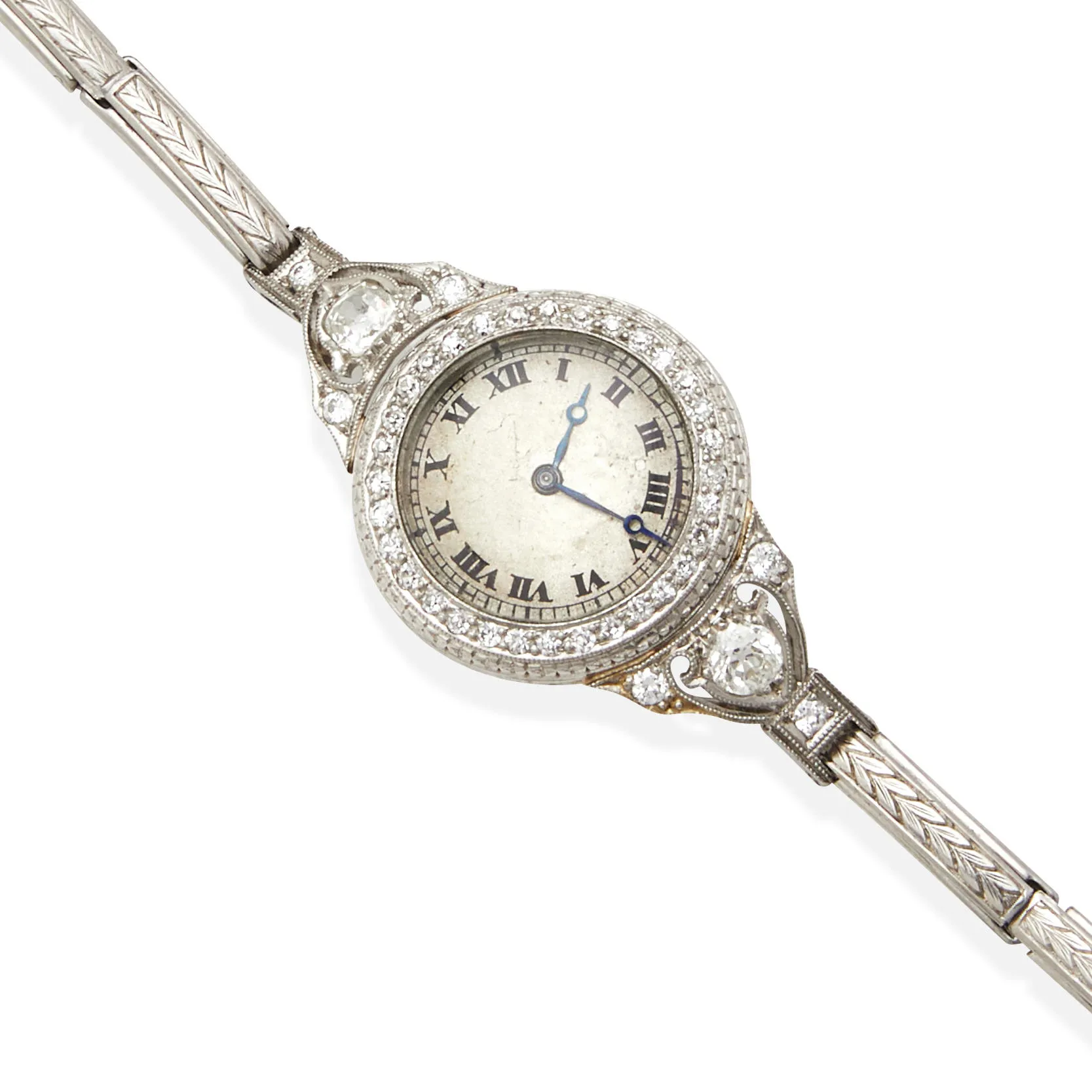Source:
Event:
Date:
Lot Number:
Condition: -
Year of Production: 1795
Case Size: 42mm
Case Material: Gilt-metal
Dial Color: White
Bracelet/Strap: -
Movement Type: -
Box: No
Papers: No
Location: United Kingdom
Estimates 523 - 785 USD
Sale Price
Description
Y A GEORGE III GILT PAIR-CASED VERGE POCKET WATCH
FRODSHAM AND SON, LONDON, CIRCA 1795
The gilt full plate fusee movement with four columnar pillars pinned through the backplate, scroll-pierced stop-iron block and verge escapement regulated by sprung three-arm steel balance with Tompion type regulation, the backplate with fine symmetrical neoclassical foliate scroll pierced and engraved balance cock with faceted diamond endstone and musical trophy at the junction with the conforming engraved foot, flanked by silvered regulation disc set within adjacent applied scroll engraved panel infill opposing signature
Frodsham & Son, London
, and numbered
2125
, the circular white enamel Arabic numeral dial with Arabic quarters to outer track and gilt brass
beetle-and-poker
hands, the inner case applied with suspension post and bow at twelve o'clock and the outer applied with tortoiseshell pinned near the conforming rim mouldings.
The pillar plate 3.6cm (1.375ins) diameter, the inner case 4.2cm (1.675ins) diameter; the outer case 4.8cm (4.875ins) diameter.
William Frodsham senior is recorded in Baillie, G.H.
Watchmakers & Clockmakers of the World
as born 1728, free of the Clockmakers' Company in 1781 and died 1807. He worked from 12 Kingsgate Street, Red Lion Square, London and was appointed as one of the 'Experts' to assess Harrison's and Earnshaw's marine chronometers. He is thought to have probably been a journeyman to Justin Vulliamy and worked with his son, William junior (1755-1805), from circa 1779-1805 who is believed to have been taught the art of watch jewelling by his friend Thomas Earnshaw. This friendship led to a conflict of interest when, in 1804, Frodsham was asked by the Board of Longitude to give evidence relating to a claim for a reward by Earnshaw subsequent to the latter's development of an improved design of detached escapement.


